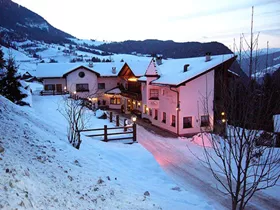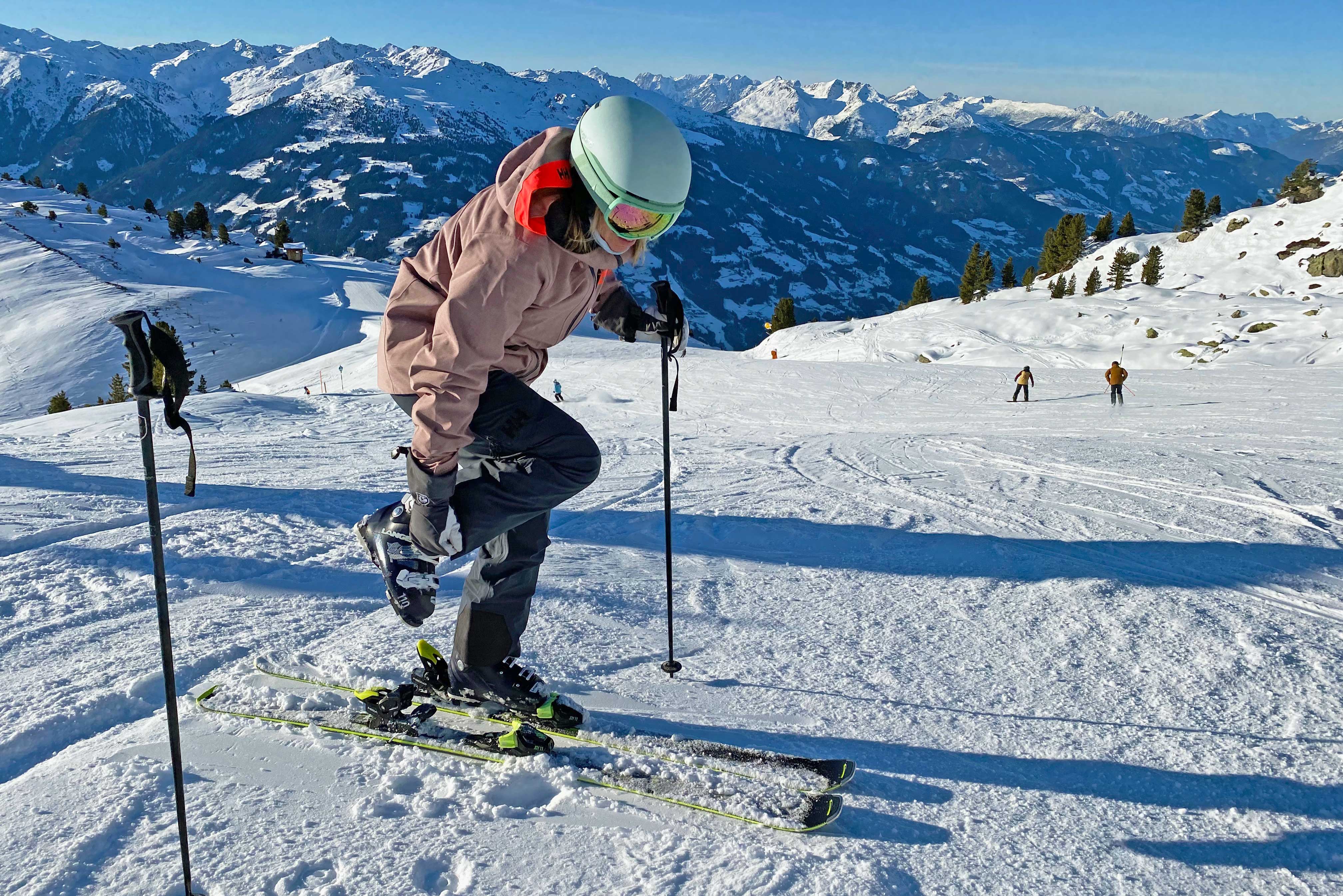Many people pack away their mountain bikes and wait until the end of the winter season to go biking in the mountains. Are you one of those people? Do you want to try something new? Do you like a challenge? Then don’t wait for summer to go mountain biking, try snow biking! You’re certainly guaranteed a real adrenalin rush!
Of course it goes without saying that you must be careful and know your route! We’ll give you some helpful tips before you get started so you too can become addicted to this fantastic new experience!
Back to school!
To begin with, it’s important to know the specific techniques involved. Mountain biking on the snow is a sport in its own right, and knowing how to ride a bike is not enough. Even if you’re an experienced mountain biker, you need to put your pride in your pocket and go back to the classroom! When mountain biking on snow, you need to forget almost everything you ever learned about riding a bike!
You should avoid sitting on the seat, you need to stand up (but keep as low as possible) with your weight behind the seat while digging your heels down. The more you can weigh down your rear tyre, the better traction you'll have and getting low over the bike will help you absorb unpredictable bumps through the increased flex in your arms and legs. Let your hips lead you and forget the handlebars - in many cases, turning the handlebars will cause you to fall! If you have to turn, don’t make any sharp movements and keep your weight as far back as possible!
Also, keep in mind that you never know exactly what lies beneath the snow. Vision is incredibly important – you need to look as far ahead as you can down the hill, scanning your path for anything jutting out of the snow or any icy patches if you’re riding on a well-worn path. Sometimes a well-worn groove is a real bonus, but it can quickly become a slippery trench so if you can’t slow down, veer off onto the edge of trail to get more grip on the untouched snow.
Safety (and fun) advice
It is extremely important to be physically well-prepared– mountain biking on snow is a pretty demanding sport especially when you’re new to it. Wear a helmet and elbow, knee and wrist protection. Dress warmly, of course, but make sure you can still move easily – bulky ski suits and/or jackets are not ideal!
Like most sports, but in particular those practiced in the mountains, NEVER go alone! Take a first aid kit, plenty of water and some snacks crammed with energy – just in case you have a problem with your bike and have to walk down the mountain! Oh and I know it seems obvious, but take your mobile phone! Even if you are with other people, always tell someone (who is not part of your group) roughly where you are going – just in case the weather closes in and you get stuck up the mountain!
Snow biking is great fun in groups as things can get pretty competitive! Using a ski app for your smart phone can be interesting – read my article dedicated to this subject – to see who is the fastest, the gradient of the descent, etc...
Ready for the challenge?
This relatively new sport is becoming available in more and more ski resorts across Europe, although one of the best places we’ve found so far is the French ski resort of
Val Thorens. There are great guides who will show you the best routes adapted to your level after a detailed briefing before setting off. If you already have some mountain biking experience, you can try the Tête Ronde blue run which starts at an altitude of 3000m, at the foot of the Péclet glacier, with a vertical drop of 700m! The route is about 6 miles long and generally takes about 45 minutes – depending on how fast you are hurtling! This run is accessible every Wednesday, Thursday and Friday evening from 5pm, after the slopes have closed. Try and enjoy the wonderful décor at sunset – if you can!
A well deserved reward at the bottom: mulled wine for everyone! If you have a valid ski pass, you will pay 40€ per descent (50€ for those without a ski pass) which includes all the necessary equipment: bike, helmet, and protections, and, of course, your guide! For more information and booking, go to the Chalet Toboggan at the Rond-point des pistes.
The mountain bikes that you hire to practice this sport will be specially equipped: full suspension, hydraulic disc brakes, downhill tyres, etc, but if you’re driving from the UK and are taking your own, then consider kitting out your bike with special snow chains adapted to avoid excessive drag on snow or ice. Also, do not inflate your tyres too much - this allows them to be more flexible and therefore adapt more easily to the terrain.
Maybe you’re one of the many people in the UK who had to resort to taking your bike in the recent bad weather to beat the travel disruptions? Let us know – leave a comment or join us on Facebook. You can also read the Guardian’s related article.
Many people pack away their mountain bikes and wait until the end of the winter season to go biking in the mountains. Are you one of those people? Do you want to try something new? Do you like a challenge? Then don’t wait for summer to go mountain biking, try snow biking! You’re certainly guaranteed a real adrenalin rush!
Of course it goes without saying that you must be careful and know your route! We’ll give you some helpful tips before you get started so you too can become addicted to this fantastic new experience!
Back to school!
To begin with, it’s important to know the specific techniques involved. Mountain biking on the snow is a sport in its own right, and knowing how to ride a bike is not enough. Even if you’re an experienced mountain biker, you need to put your pride in your pocket and go back to the classroom! When mountain biking on snow, you need to forget almost everything you ever learned about riding a bike!
You should avoid sitting on the seat, you need to stand up (but keep as low as possible) with your weight behind the seat while digging your heels down. The more you can weigh down your rear tyre, the better traction you'll have and getting low over the bike will help you absorb unpredictable bumps through the increased flex in your arms and legs. Let your hips lead you and forget the handlebars - in many cases, turning the handlebars will cause you to fall! If you have to turn, don’t make any sharp movements and keep your weight as far back as possible!
Also, keep in mind that you never know exactly what lies beneath the snow. Vision is incredibly important – you need to look as far ahead as you can down the hill, scanning your path for anything jutting out of the snow or any icy patches if you’re riding on a well-worn path. Sometimes a well-worn groove is a real bonus, but it can quickly become a slippery trench so if you can’t slow down, veer off onto the edge of trail to get more grip on the untouched snow.
Safety (and fun) advice
It is extremely important to be physically well-prepared– mountain biking on snow is a pretty demanding sport especially when you’re new to it. Wear a helmet and elbow, knee and wrist protection. Dress warmly, of course, but make sure you can still move easily – bulky ski suits and/or jackets are not ideal!
Like most sports, but in particular those practiced in the mountains, NEVER go alone! Take a first aid kit, plenty of water and some snacks crammed with energy – just in case you have a problem with your bike and have to walk down the mountain! Oh and I know it seems obvious, but take your mobile phone! Even if you are with other people, always tell someone (who is not part of your group) roughly where you are going – just in case the weather closes in and you get stuck up the mountain!
Snow biking is great fun in groups as things can get pretty competitive! Using a ski app for your smart phone can be interesting – read my article dedicated to this subject – to see who is the fastest, the gradient of the descent, etc...
Ready for the challenge?
This relatively new sport is becoming available in more and more ski resorts across Europe, although one of the best places we’ve found so far is the French ski resort of
Val Thorens. There are great guides who will show you the best routes adapted to your level after a detailed briefing before setting off. If you already have some mountain biking experience, you can try the Tête Ronde blue run which starts at an altitude of 3000m, at the foot of the Péclet glacier, with a vertical drop of 700m! The route is about 6 miles long and generally takes about 45 minutes – depending on how fast you are hurtling! This run is accessible every Wednesday, Thursday and Friday evening from 5pm, after the slopes have closed. Try and enjoy the wonderful décor at sunset – if you can!
A well deserved reward at the bottom: mulled wine for everyone! If you have a valid ski pass, you will pay 40€ per descent (50€ for those without a ski pass) which includes all the necessary equipment: bike, helmet, and protections, and, of course, your guide! For more information and booking, go to the Chalet Toboggan at the Rond-point des pistes.
The mountain bikes that you hire to practice this sport will be specially equipped: full suspension, hydraulic disc brakes, downhill tyres, etc, but if you’re driving from the UK and are taking your own, then consider kitting out your bike with special snow chains adapted to avoid excessive drag on snow or ice. Also, do not inflate your tyres too much - this allows them to be more flexible and therefore adapt more easily to the terrain.
Maybe you’re one of the many people in the UK who had to resort to taking your bike in the recent bad weather to beat the travel disruptions? Let us know – leave a comment or join us on Facebook. You can also read the Guardian’s related article.












